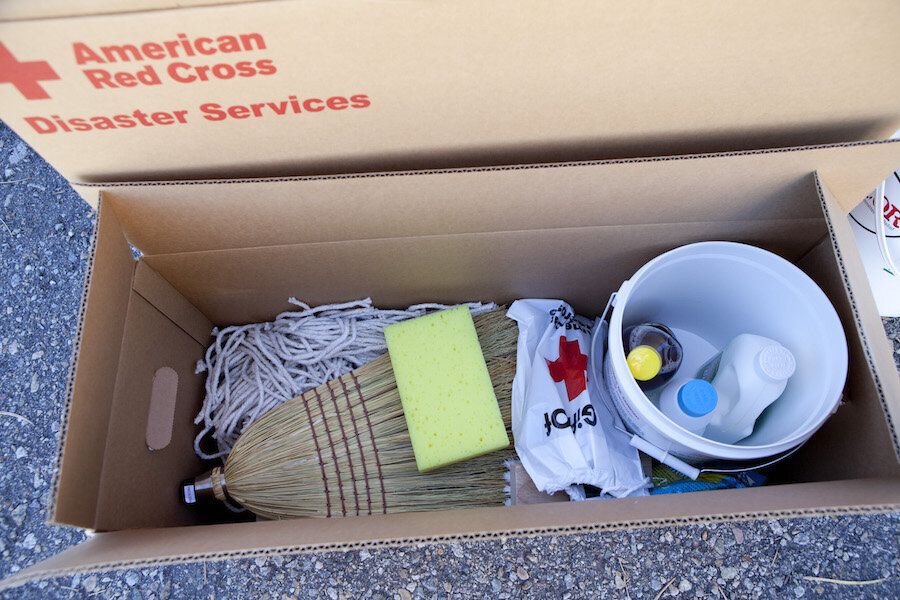In choosing a charity, when is bigger better?
Loading...
Charities are as diverse and wide-ranging as for-profit businesses. There are the giant, Fortune 500 equivalents – United Way, The Y, American Red Cross (see our chart rating the biggest US charities of 2015). On the other end, there are local charities and those just getting off the ground.
Bad or poorly run nonprofits can lurk in each group. Earlier this year, the Federal Trade Commission (FTC) charged a network of four major cancer charities with bilking well-meaning donors out of a combined $187 million between 2008 and 2012. But even a well-meaning charity can have mismanaged finances, or just offer ineffective support of the causes with which it is aligned.
Of course, the opposite is true, too: A good charity can come in the form of a local start-up with a two-person staff or a multibillion-dollar giant with resources to stretch across the globe.
Deciding where to direct your time or money this holiday season means understanding your specific goals for the donation, and how interested you are in seeing it through.
Good reasons for a ‘go big’ strategy
For certain donors and causes, the global heavyweights have a few key advantages, says Art Taylor, president of the Better Business Bureau’s charity evaluation arm, the Wise Giving Alliance. For example, if you want to contribute in the early days of “a major disaster, with high levels of both property and human casualty, you want to look for organizations that have boots on the ground and experience in dealing with that complexity,” he says. Established relief groups like the Red Cross or Compassion International, he notes, have been navigating the complications of working and donating in other countries for years. “In the early days of a disaster it can be hard to find local organizations that can help,” Mr. Taylor adds, “because they may have been affected, too.”
Additionally, major watchdog groups typically have scrutinized the operations of larger charities. When contributing to well-funded causes like cancer research, it’s relatively easy to find a wide array of charities that have been evaluated by multiple third parties. “If [a charity] has not been evaluated, see why,” or take your gift elsewhere, Taylor recommends. “If [a charity is] significant, it will have been evaluated by somebody.”
When smaller is better
The most crucial advantage small and local charities offer over their larger counterparts is an ability to respond to the needs of their respective communities as they change and focus on underserved causes. Such is the case with Project Worthmore, which Frank Anello started in 2009 to help newly arrived Burmese refugees to the Denver area.
“I saw several families who were falling through the gap and not getting basic support like clothing, transportation, basic language skills,” he says. What started with Mr. Anello and a handful of volunteers teaching English on the floor of refugees’ apartments, securing winter coats, and arranging transportation to medical appointments has since grown into an organization that drew in $500,000 in donations last year.
Project Worthmore now has about two dozen staff members and recently added a free dental clinic to its slate of refugee services. Anello credits that growth to letting the Burmese refugee community help shape the charity in its early stages. “We meet regularly with leaders and poll them how things are going and what they would like to see provided,” he says. “There has been a major shift in our services and a higher attendance rate for all of our programs.”
For donors, local involvement means “you can see the impact and talk with volunteers and leaders” when evaluating a cause, says Fern Portnoy, a philanthropy adviser whose firm aids start-up charities including Project Worthmore. “The problem is evaluating them. The biggest issue I have found over the years is the start-up groups don’t always have a good handle on their finances.”
Indeed, despite Project Worthmore’s rapid growth, it is still not big enough to be on the radar of the leading watchdogs. Charity Navigator, for one, only evaluates groups with at least $1 million in annual revenue. But as charities grow, Ms. Portnoy recommends donors ask for audited financial statements, and that charities be prepared to offer them. Project Worthmore started with everything coming out of Anello’s pocket, but it enlisted the services of an outside chief financial officer upon becoming incorporated as a charity in 2011.
“Look at donating to start-up charitable organizations the same way you would investing in a small business,” Portnoy recommends. The risks are the same, but “you get to see your money working.”








